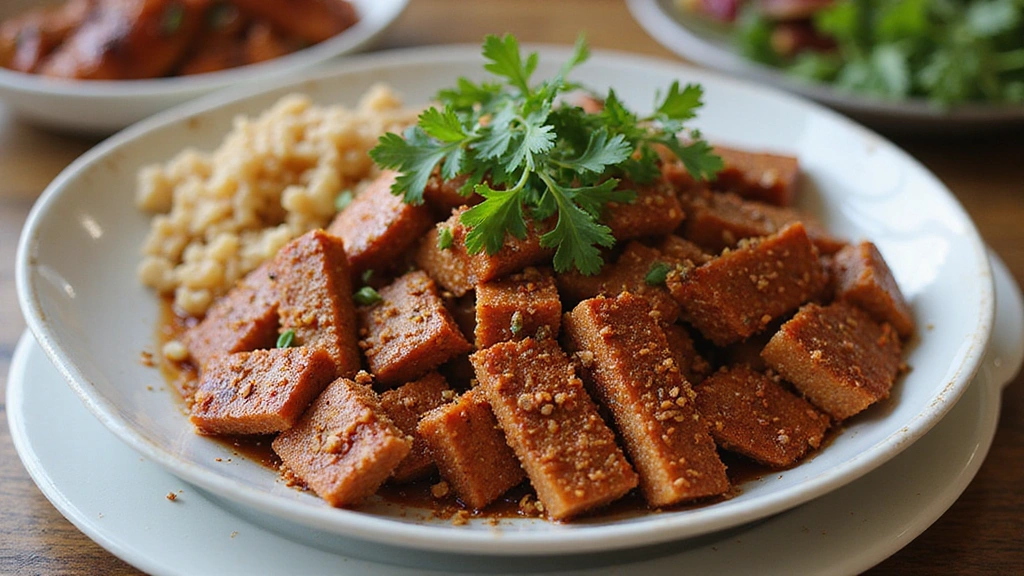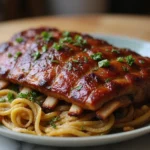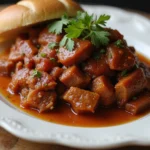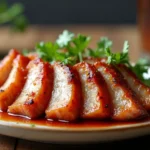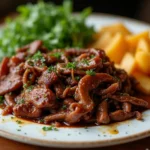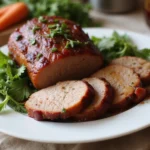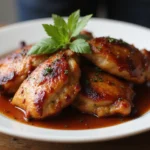Pampered Chef Korean BBQ Rub Recipes bring a vibrant burst of flavor that transports you straight to the heart of Korean culinary tradition.
This unique blend of spices combines sweet, savory, and spicy notes, creating an irresistible seasoning for meats and vegetables alike.
My journey into Korean BBQ began during a memorable meal with friends, where the rich aromas and bold flavors ignited my passion for this cuisine.
Whether you’re firing up the grill for a summer barbecue or preparing a cozy indoor feast, these rubs will elevate your dishes and impress your guests.
The History and Cultural Significance
• Pampered Chef Korean BBQ Rub Recipes trace their origins to Korea, where grilling meat has been a cherished tradition for centuries.
• The dish evolved over decades as regional spices and cooking techniques were incorporated, eventually becoming the beloved BBQ we enjoy today.
• In Korean culture, BBQ often appears at festive gatherings and celebrations, symbolizing unity and togetherness among family and friends.
• While many variations exist across different regions, the authentic version maintains a perfect balance of sweet and savory flavors that sets it apart from imitations.
Recipe Overview
Nutritional Information (per serving)
Ingredients
Essential Equipment Guide
Grill or Grill Pan: A high-quality grill or grill pan is crucial for achieving that authentic char and smoky flavor. Look for non-stick surfaces or cast iron options that distribute heat evenly for perfect searing.
Mortar and Pestle: This tool is essential for grinding spices and herbs to release their natural oils and flavors. If you don’t have one, a spice grinder works as a good alternative, but be cautious not to over-process.
Meat Thermometer: This is vital for ensuring your meats are cooked to the perfect doneness. Choose a digital thermometer for quick and accurate readings, which is essential for achieving that juicy texture.
Preparation Methods
Marinating: This technique involves soaking the meat in the BBQ rub and additional liquids to infuse flavors. Marinating for at least 30 minutes allows the spices to penetrate deeply, enhancing the final taste.
Grilling: This method uses direct heat to cook the meat, achieving a delicious char while keeping it juicy. Preheat your grill to medium-high heat for optimal cooking results and remember to oil the grates to prevent sticking.
Resting: Allowing your meat to rest after grilling is crucial for retaining juices. Let it sit for 5-10 minutes before slicing to ensure maximum tenderness and flavor.
Step 1: Prepare the Rub
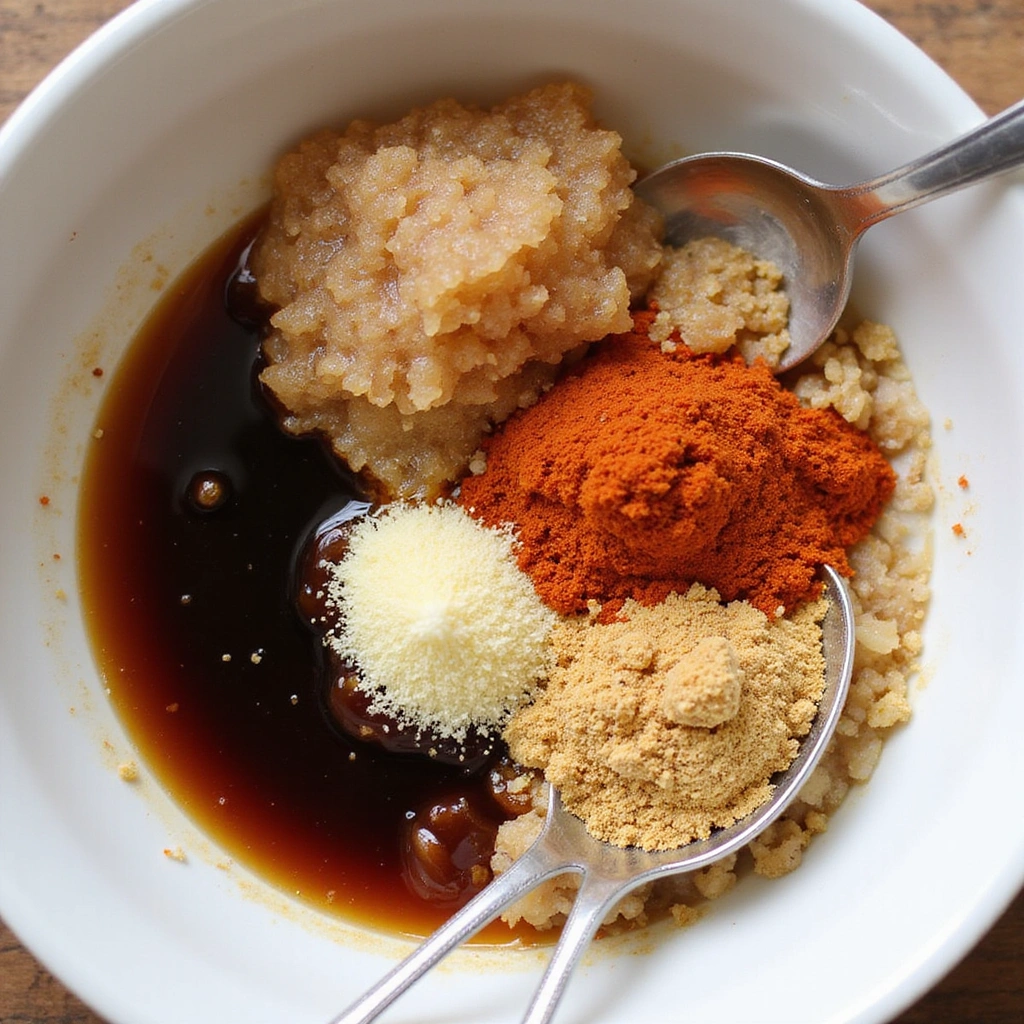
In a small bowl, combine brown sugar, soy sauce, gochugaru, garlic powder, and ginger powder.
Mix thoroughly until all ingredients are well blended.
This combination creates a balanced flavor profile essential for Korean BBQ.
Make sure there are no lumps of sugar or spices for an even coating on the meat.
Step 2: Marinate the Meat
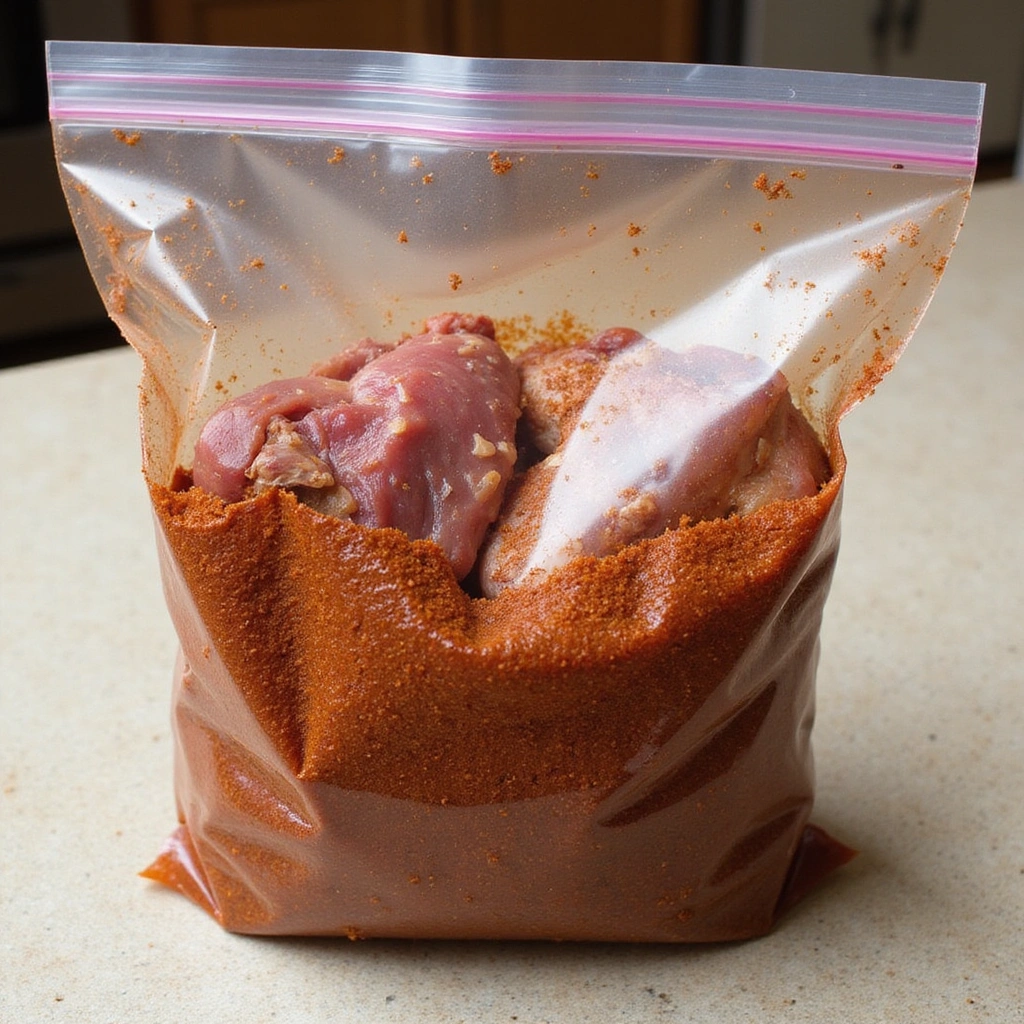
Place the beef short ribs and chicken thighs in a large resealable bag or a shallow dish.
Pour the prepared rub over the meat, ensuring each piece is coated evenly.
Seal the bag or cover the dish and refrigerate for at least 30 minutes, or up to overnight for deeper flavor.
This step is vital for flavor infusion and tenderness.
Step 3: Preheat the Grill
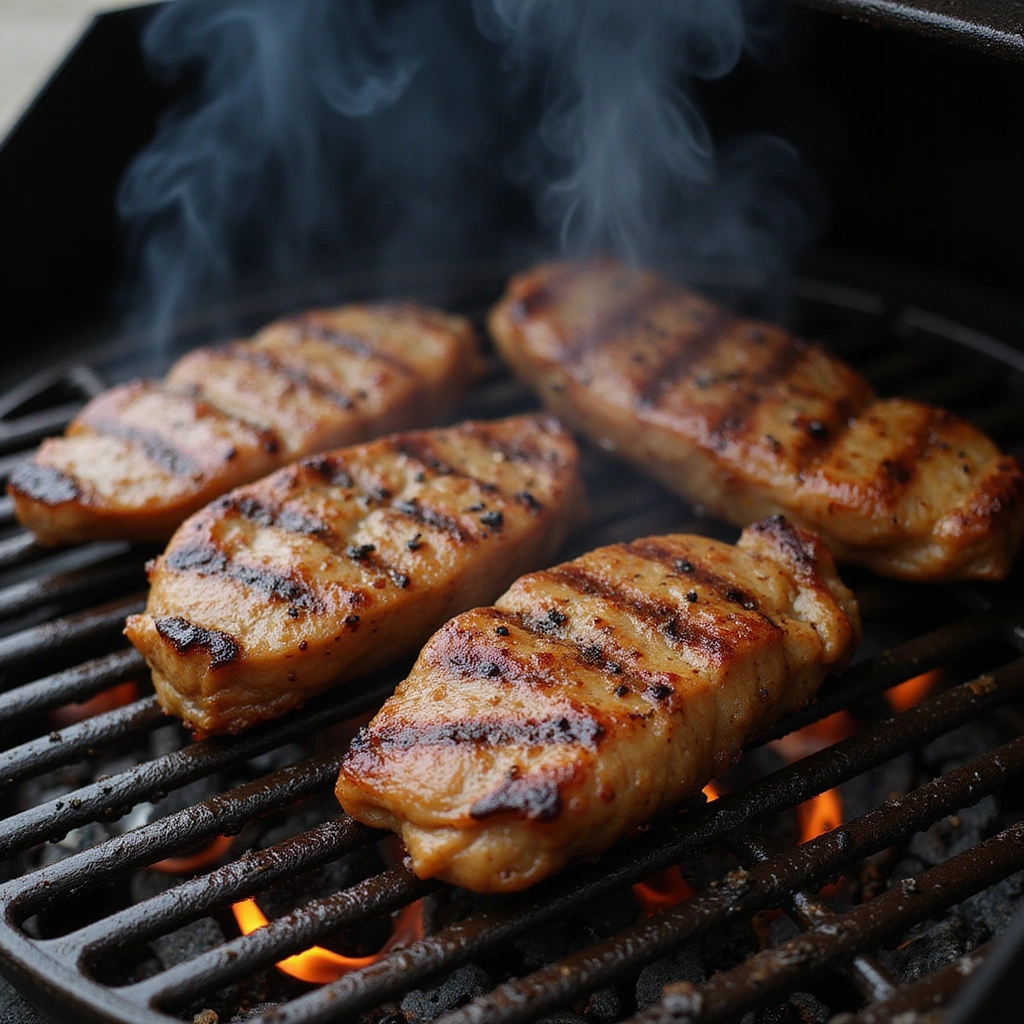
While the meat is marinating, preheat your grill to medium-high heat.
This usually takes about 10-15 minutes, depending on your grill type.
Ensure the grates are clean and lightly oiled to prevent sticking.
A properly heated grill provides that delicious sear and smoky flavor.
Step 4: Grill the Meat
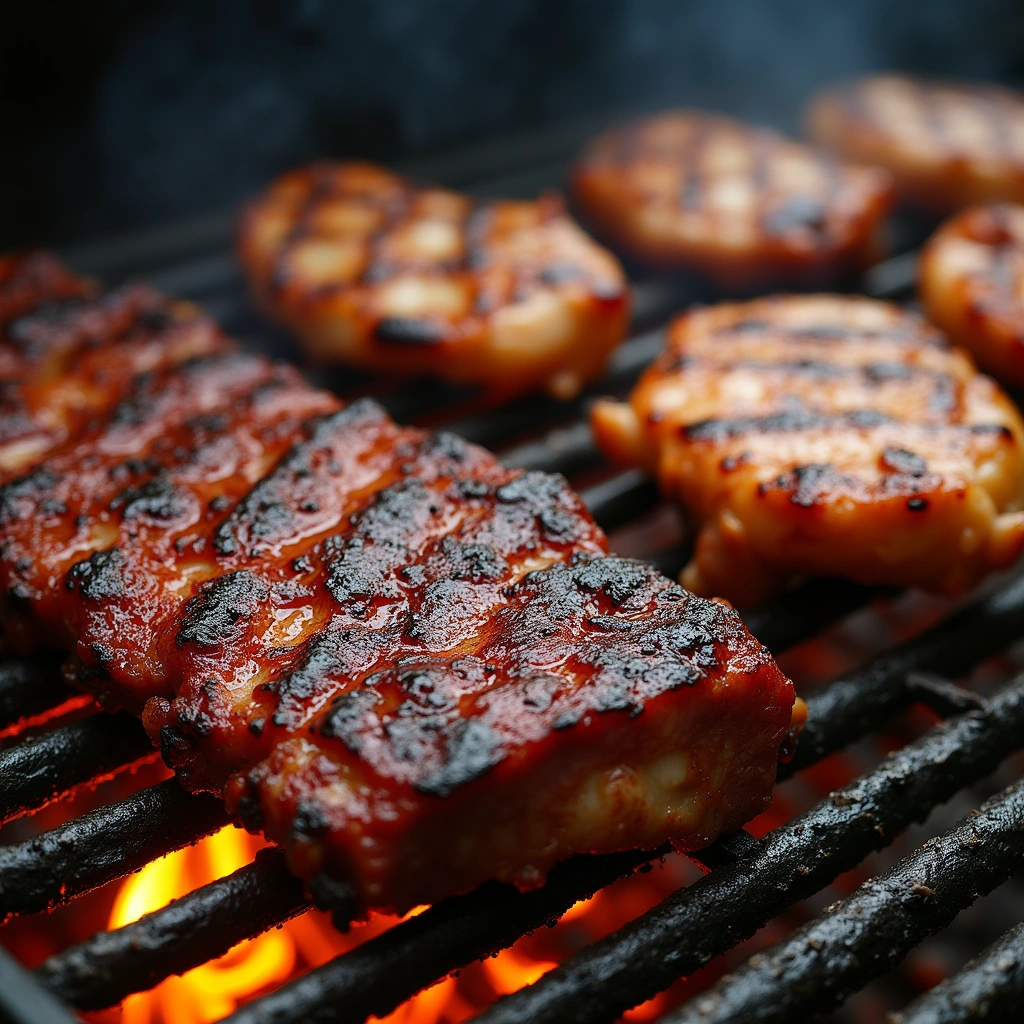
Once the grill is hot, place the marinated meat directly onto the grates.
Cook the beef short ribs for about 5-7 minutes per side, and the chicken thighs for about 6-8 minutes per side.
Watch for signs of charring and adjust the heat as needed to avoid burning.
Using tongs, flip the meat carefully to ensure even cooking.
Step 5: Check Doneness

Use a meat thermometer to check the internal temperature of the chicken thighs.
They should reach 165°F for safe consumption, while beef short ribs are best at around 145°F for medium-rare.
Make sure to insert the thermometer into the thickest part of the meat, avoiding bones.
This step is crucial for food safety and optimal flavor.
Step 6: Rest the Meat
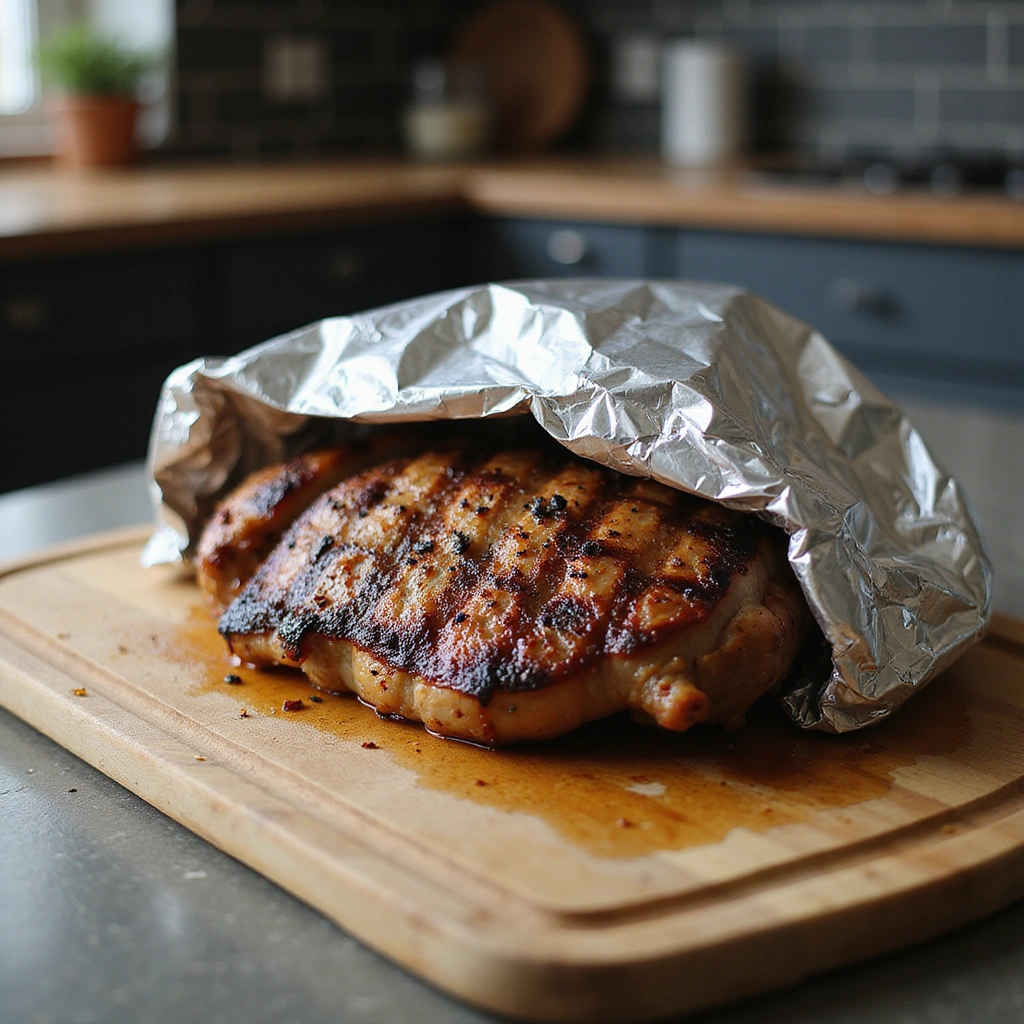
Once cooked, remove the meat from the grill and place it on a cutting board.
Cover it loosely with aluminum foil and let it rest for 5-10 minutes.
This allows the juices to redistribute, resulting in more tender and flavorful meat.
Avoid cutting into the meat too soon, as this releases the juices.
Step 7: Slice and Serve
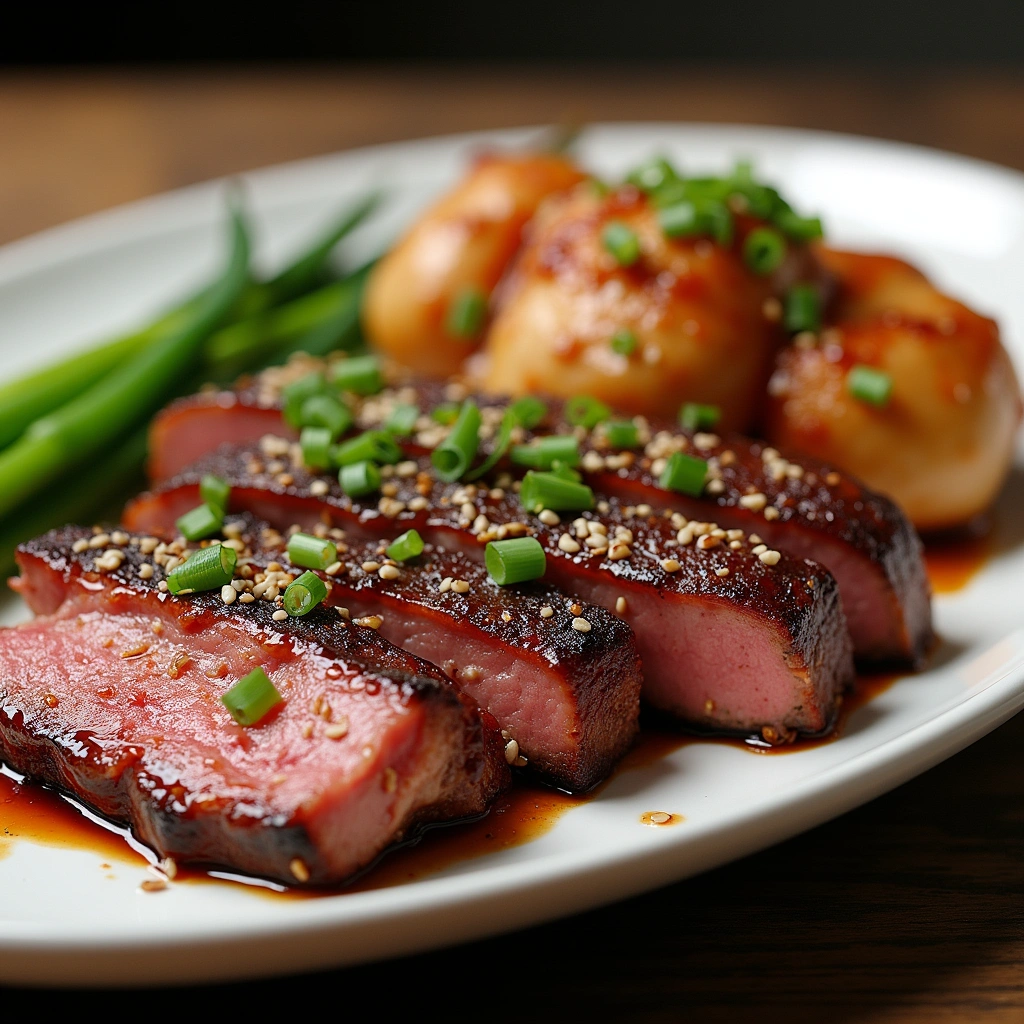
After resting, slice the beef short ribs against the grain into bite-sized pieces.
For the chicken thighs, you can serve them whole or slice them as desired.
Arrange the meat on a serving platter, garnishing with chopped green onions or sesame seeds for added flavor.
This final presentation step enhances the dish’s appeal.
Critical Timing and Temperature Guide
Marinating Time: Ideal marinating time is between 30 minutes to overnight. The longer you marinate, the more pronounced the flavors become. Avoid marinating for over 24 hours as the meat may become too salty.
Grilling Time: Beef short ribs should be grilled for about 5-7 minutes per side, and chicken thighs for 6-8 minutes per side. Always check the internal temperature to ensure doneness, aiming for 165°F for chicken and 145°F for beef.
Resting Time: Allow the meat to rest for 5-10 minutes after grilling. This step is essential for juicy and tender meat, as slicing too early will result in loss of juices.
Pro Tips for Pampered Chef Korean BBQ Rub Recipes Full Of Bold Flavor
• Ingredient Selection: Choose high-quality meats like bone-in chicken thighs and well-marbled beef short ribs for the best flavor and texture.
• Preparation Secret: Letting the meat marinate overnight significantly enhances the flavor profile, making it more robust.
• Temperature Management: Preheat the grill adequately to achieve the perfect sear without overcooking the meat.
• Texture Enhancement: Use a sharp knife to slice the meat against the grain for maximum tenderness.
• Flavor Layering: Consider adding a splash of sesame oil to your rub for an extra layer of flavor.
• Make-Ahead Strategies: Prepare the rub in advance and store it in the fridge for up to a week.
• Restaurant-Quality Finishing Touches: Drizzle with sesame oil and sprinkle with toasted sesame seeds before serving.
• Equipment Optimization: Ensure your grill grates are clean and well-oiled to prevent sticking and ensure even cooking.
Troubleshooting Common Issues
• Meat Too Salty: This usually happens from an over-marination. To prevent this, stick to the recommended marinating time and taste the rub before applying it.
• Meat Not Grilling Properly: If the meat sticks to the grill, it may not be preheated enough or not oiled properly. Always oil the grates and ensure they are hot before placing the meat.
• Uneven Cooking: If some pieces are cooked while others are undercooked, make sure to arrange the meat on the grill evenly and avoid overcrowding.
• Flavor Lacking Depth: To enhance flavor, consider adding more spices or marinating longer. Fresh herbs can also elevate the taste.
• Meat Too Tough: This might be due to undercooking or using a lean cut. Always check temperatures and choose cuts with more marbling for tenderness.
• Charred Exterior, Raw Interior: This happens when the grill is too hot. Lower the heat and cook more slowly to achieve even doneness.
Variations and Regional Differences
• Galbi (Marinated Short Ribs): This version uses a soy-based marinade with pear puree for sweetness, resulting in a tender and flavorful dish. It’s a popular choice for celebrations.
• Bulgogi (Marinated Beef): This variation features thinly sliced beef marinated in a sweet soy sauce mixture and grilled quickly over high heat, often served with rice and vegetables.
• Spicy Pork BBQ: In this variant, pork is marinated with gochujang (Korean chili paste) and grilled, offering a spicier flavor profile that many love.
• Modern Interpretations: Contemporary versions often incorporate unique ingredients like citrus zest or fusion elements, such as BBQ tacos, to appeal to diverse palates.
Food Science Behind the Recipe
• Marinade Chemistry: The acid in the marinade (like soy sauce) helps to break down proteins in the meat, making it tender and flavorful. Understanding marinade ratios can improve results.
• Maillard Reaction: This chemical reaction occurs when the surface of the meat is exposed to high heat, creating that delicious crust and complex flavors. Proper grilling techniques enhance this effect.
• Flavor Infusion: Allowing time for marination gives spices and aromatics the opportunity to penetrate the meat, leading to a more flavorful final dish. The balance of sweet, salty, and spicy is crucial for achieving authentic taste.
Frequently Asked Questions
What’s the most common mistake people make when preparing Korean BBQ? Many tend to over-marinate the meat, resulting in excessive saltiness. Stick to recommended marinating times for the best balance.
Can I prepare components of this dish in advance? Yes, the rub can be made in advance and stored in an airtight container for up to a week. Marinating the meat overnight is also recommended for deep flavor.
How do I adapt this recipe for dietary restrictions? For a gluten-free version, use tamari or coconut aminos in place of soy sauce, and adjust the sugar for sweetness.
What’s the best way to store and reheat leftovers? Store leftovers in an airtight container in the fridge for up to 3 days. Reheat in a skillet over medium heat until warmed through to preserve texture.
Can I freeze this dish? Yes, marinated meat can be frozen for up to 3 months. Thaw in the fridge overnight before grilling.
What wine or beverages pair best with this dish? A light-bodied red wine or a crisp lager complements the bold flavors of Korean BBQ beautifully.
How can I scale this recipe up for a crowd? Simply multiply the ingredient amounts accordingly, ensuring you have adequate grill space for cooking multiple batches.
What side dishes complement this recipe best? Traditional sides like kimchi, pickled vegetables, or steamed rice enhance the meal’s experience.
How do professional chefs elevate this dish for restaurant service? Many chefs add unique garnishes, such as microgreens or edible flowers, and elevate the plating with drizzles of sauces.
Serving and Presentation Guide
• Traditional Presentation: Serve the grilled meats on a large platter, garnished with sliced green onions and sesame seeds. Accompany with rice and traditional side dishes for an authentic feel.
• Modern Plating Ideas: Arrange the meat on individual plates with colorful sides like pickled vegetables, creating a visually appealing presentation.
• Accompaniment Suggestions: Serve alongside kimchi, steamed rice, and a refreshing cucumber salad to balance the dish’s bold flavors.
• Special Occasion Presentation: For celebrations, consider using decorative serving dishes and adding fresh herbs as garnish for a more upscale appearance.
Conclusion
I hope this Pampered Chef Korean BBQ Rub recipe inspires you to bring a taste of Korea into your kitchen.
With its bold flavors and enticing aromas, this dish is sure to impress and delight.
Enjoy the process of making it as much as you will enjoy sharing it with loved ones.

